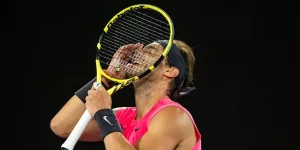From Clay to Hard Court: The Journey of Tennis Balls Through Different Surfaces
In the diverse landscape of tennis courts around the world, from the red clay of Roland Garros to the hard courts of the US Open, one constant remains: the tennis ball. Yet, despite their unassuming appearance, tennis balls are not one-size-fits-all. Instead, they undergo a transformative journey as they traverse different surfaces, adapting to the unique demands of each playing environment. Join us as we embark on a journey to explore how tennis balls evolve and perform on various court surfaces.

The Influence of Court Surfaces on Tennis Ball Dynamics
Before delving into the specifics of tennis ball performance on different surfaces, it’s essential to understand how court surfaces impact ball behavior:
Clay Courts
Clay courts, characterized by their soft and granular surface, pose unique challenges for tennis balls. The loose composition of clay absorbs the impact of the ball, resulting in slower bounce and reduced pace. As a result, tennis balls used on clay courts typically have a finer felt texture to enhance grip and generate spin, allowing players to control rallies and execute precise shots with accuracy.
Grass Courts
Grass courts, renowned for their fast and low-bouncing surface, present a stark contrast to clay courts. Tennis balls on grass courts tend to skid and slide across the surface, making timing and footwork crucial for success. To accommodate the unique characteristics of grass courts, tennis balls are typically less pressurized, allowing for a softer feel and lower bounce. Additionally, balls used on grass courts may feature a coarser felt texture to improve visibility and durability on the slick surface.
Hard Courts
Hard courts, composed of asphalt or concrete covered with acrylic or synthetic materials, offer a medium-paced playing surface that combines elements of clay and grass courts. Tennis balls on hard courts experience moderate bounce and pace, providing players with a balance of power and control. Balls used on hard courts are often durable and resilient, featuring a felt texture that strikes a middle ground between the finer texture of clay court balls and the coarser texture of grass court balls.
The Evolution of Tennis Ball Technology for Different Surfaces
As tennis has evolved over the years, so too has tennis ball technology, with manufacturers continually innovating to optimize performance on different court surfaces: These specialized formulations take into account factors such as bounce, grip, and durability, ensuring that tennis balls perform consistently across different surfaces. These specialized formulations take into account factors such as bounce, grip, and durability, ensuring that tennis balls perform consistently across different surfaces.
Surface-Specific Formulations
To meet the unique demands of clay, grass, and hard courts, tennis ball manufacturers develop surface-specific formulations tailored to each playing environment. These specialized formulations take into account factors such as bounce, grip, and durability, ensuring that tennis balls perform consistently across different surfaces.
Court-Specific Testing
Manufacturers conduct rigorous testing to evaluate the performance of tennis balls on various court surfaces, simulating real-world playing conditions to assess factors such as bounce height, bounce consistency, and felt wear. By fine-tuning the design and construction of tennis balls based on court-specific feedback, manufacturers can optimize performance and enhance player experience.
Conclusion: Navigating the Multifaceted World of Tennis Ball Surfaces
In the multifaceted world of tennis, where every court surface presents its own set of challenges and opportunities, the journey of the tennis ball is one of adaptation and evolution. From the dusty red clay of Monte Carlo to the pristine grass courts of Wimbledon, tennis balls traverse diverse landscapes, shaping and shaped by the surfaces they encounter. By understanding the nuances of tennis ball performance on different surfaces and embracing surface-specific technologies, players can optimize their game and conquer any court with confidence and finesse.